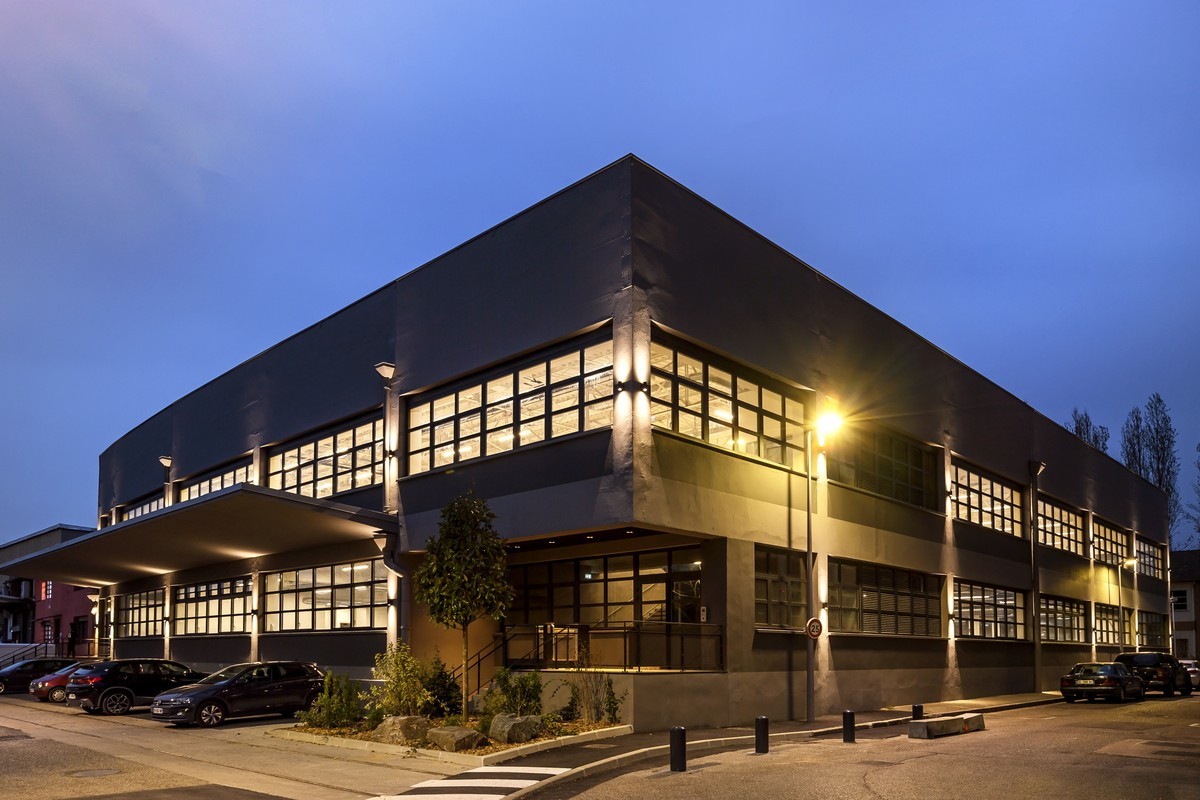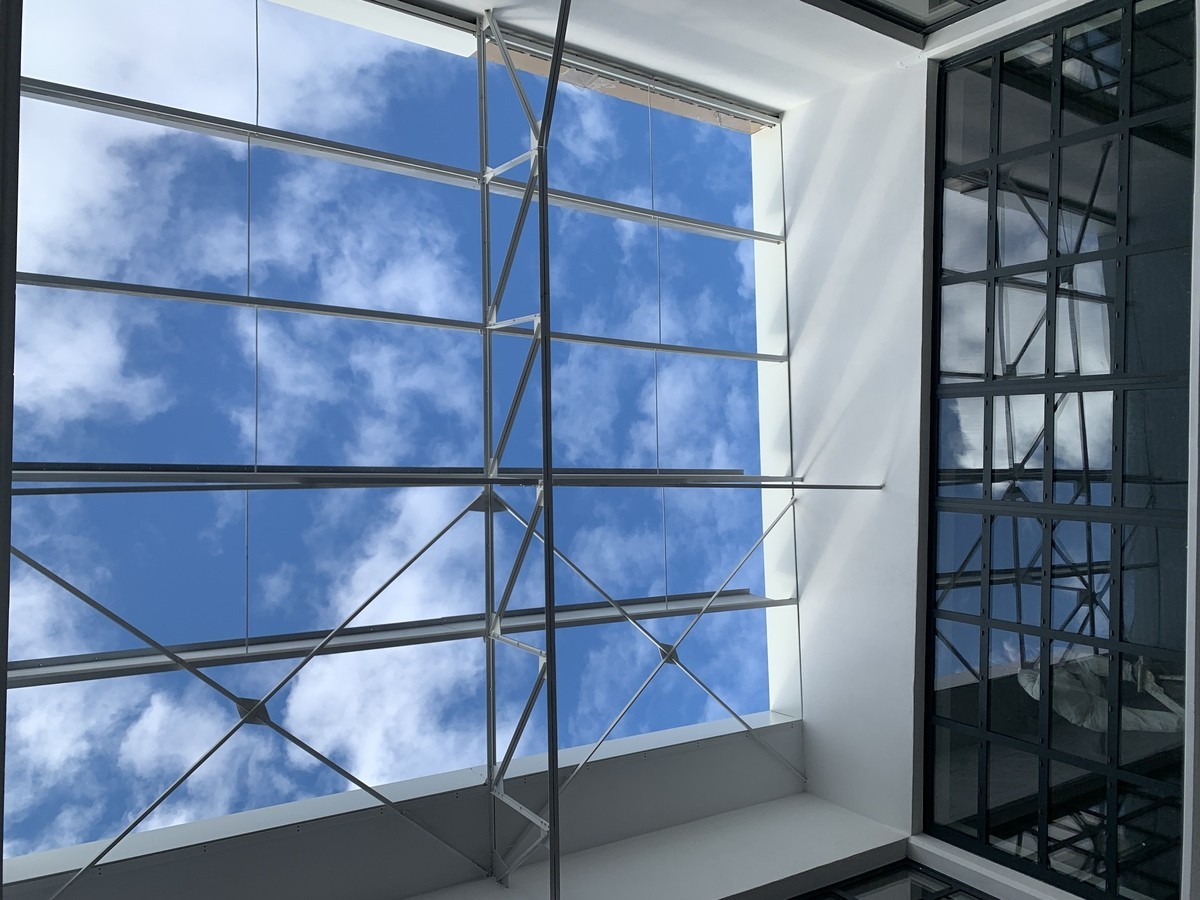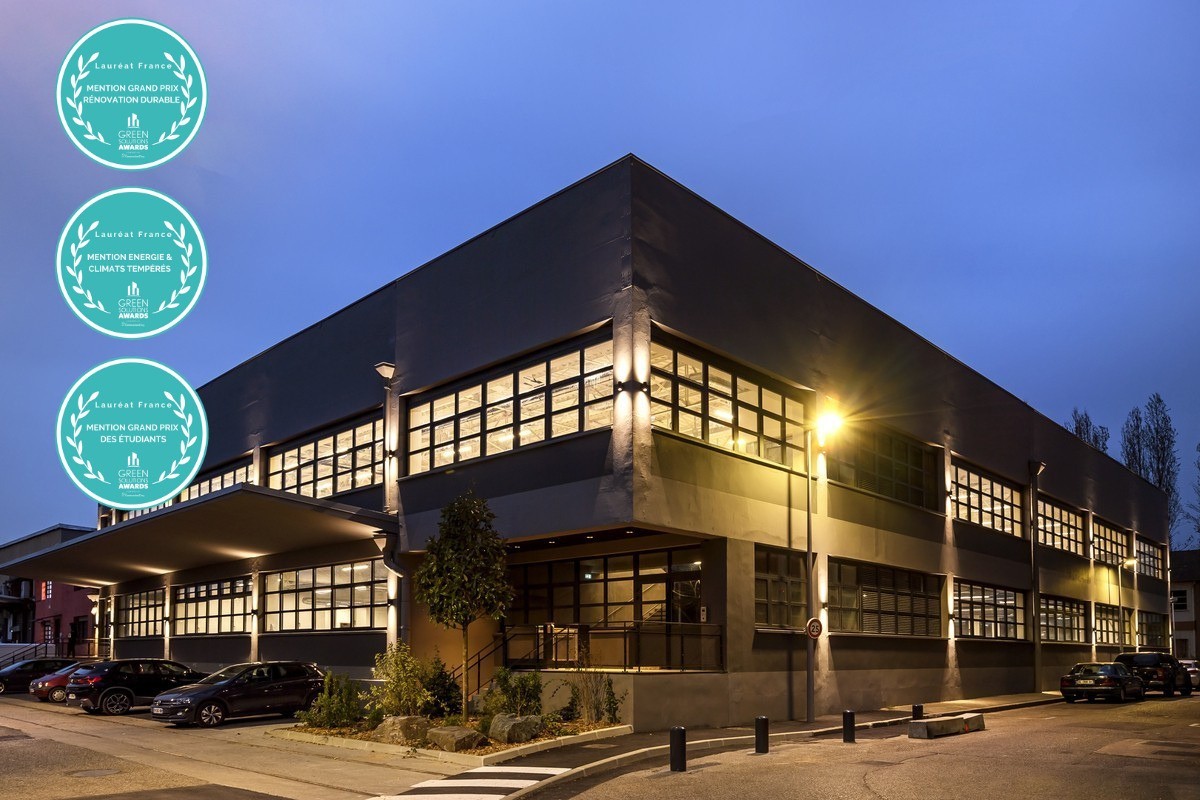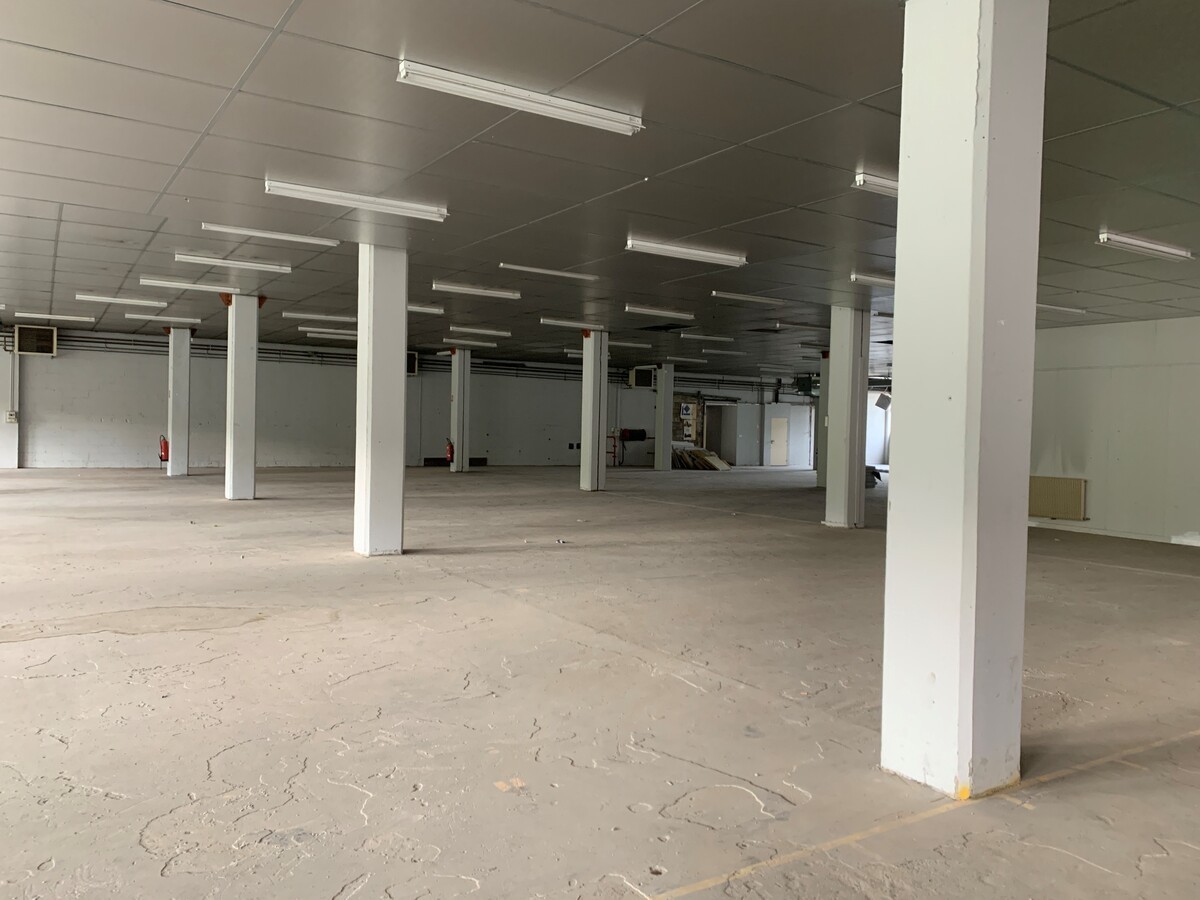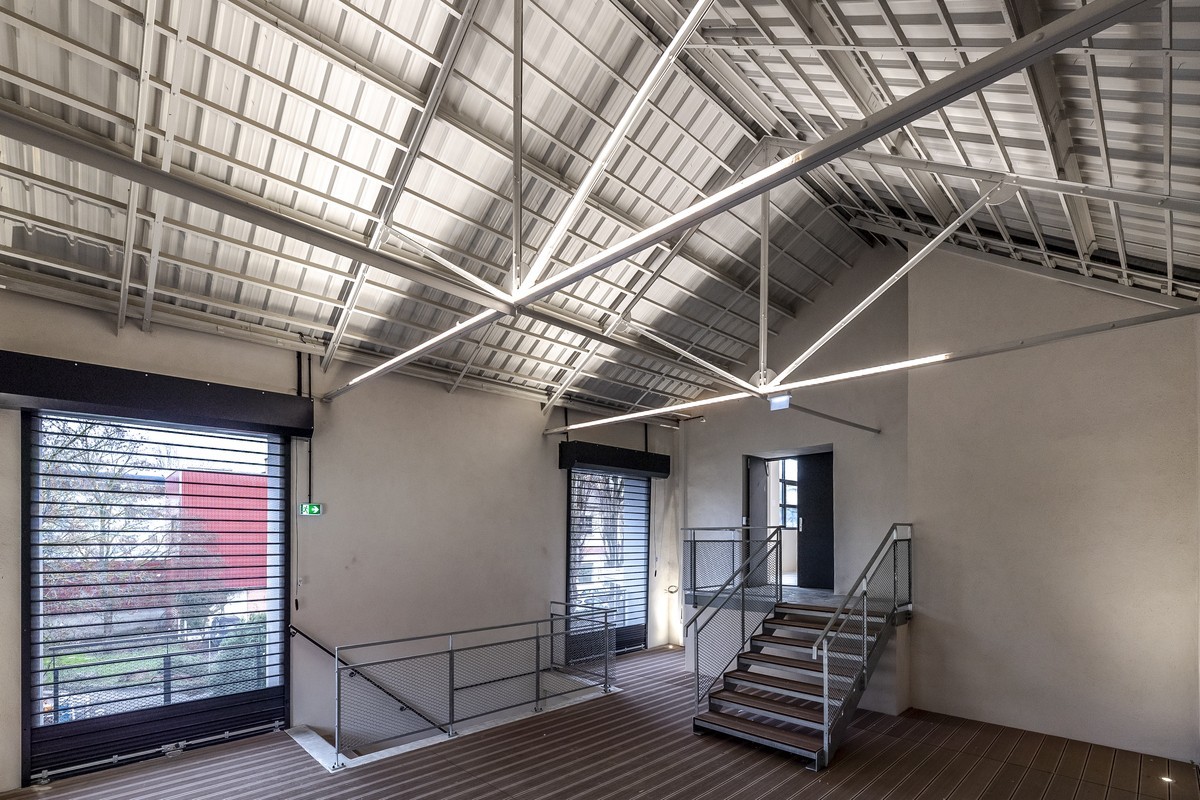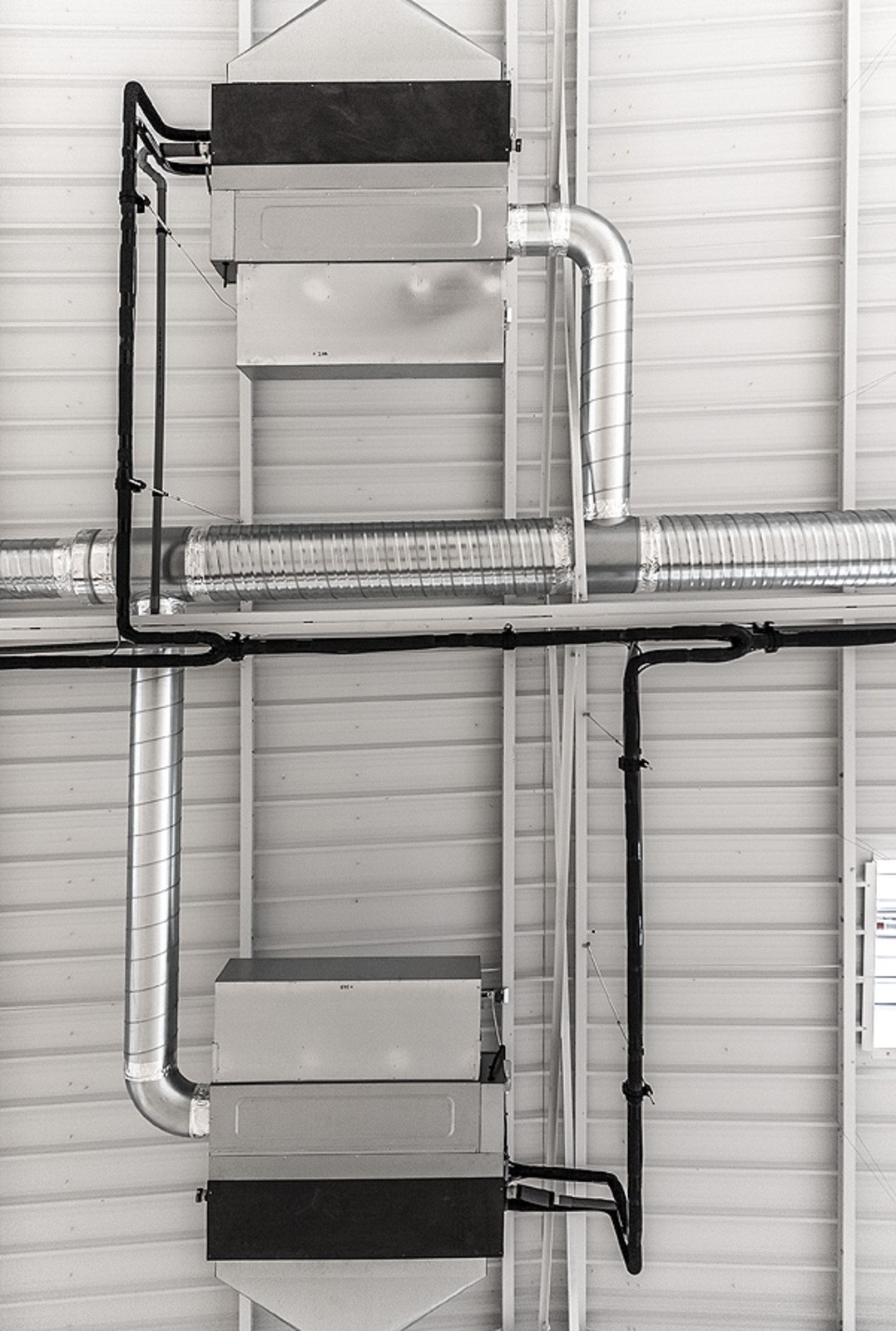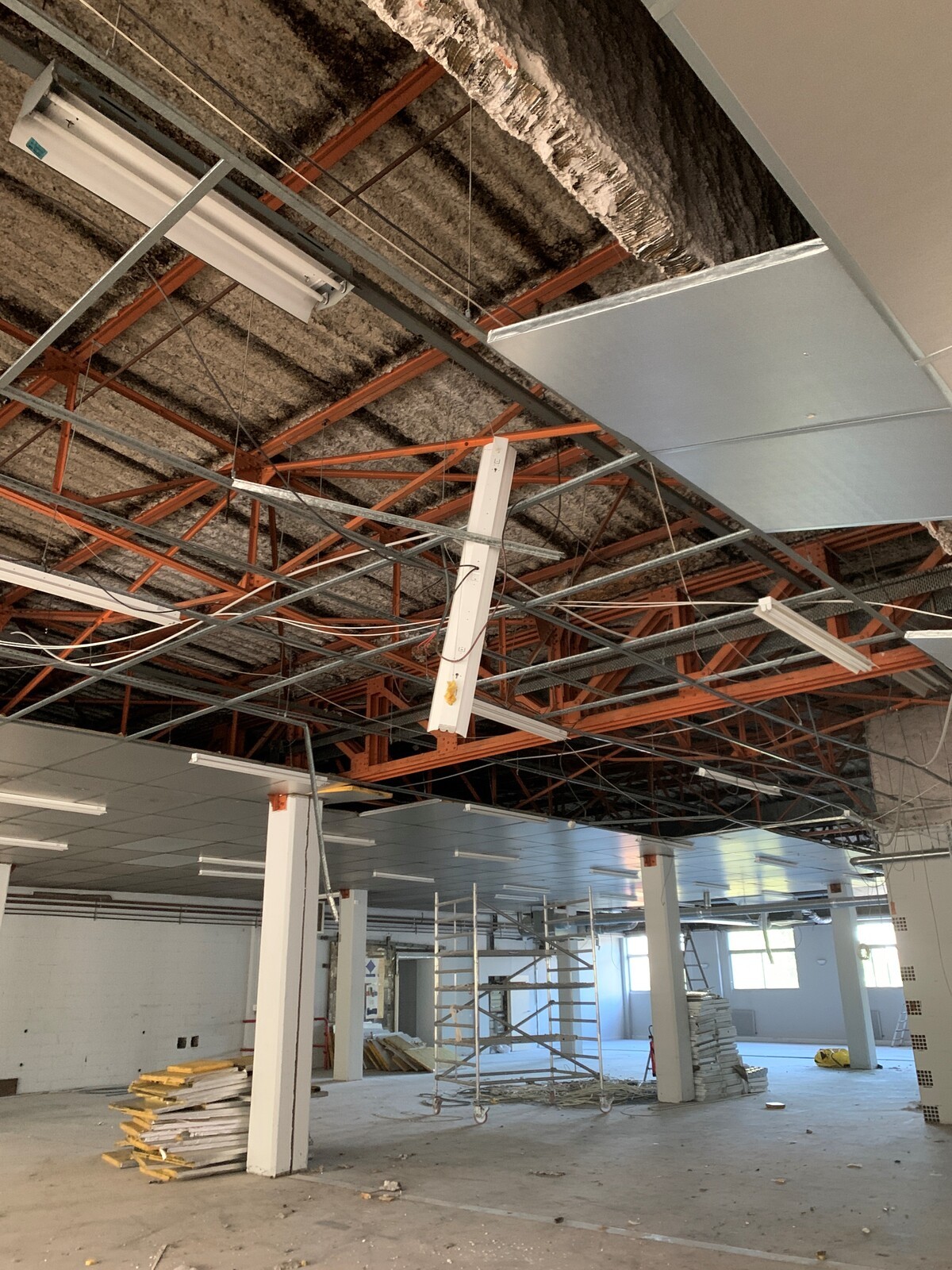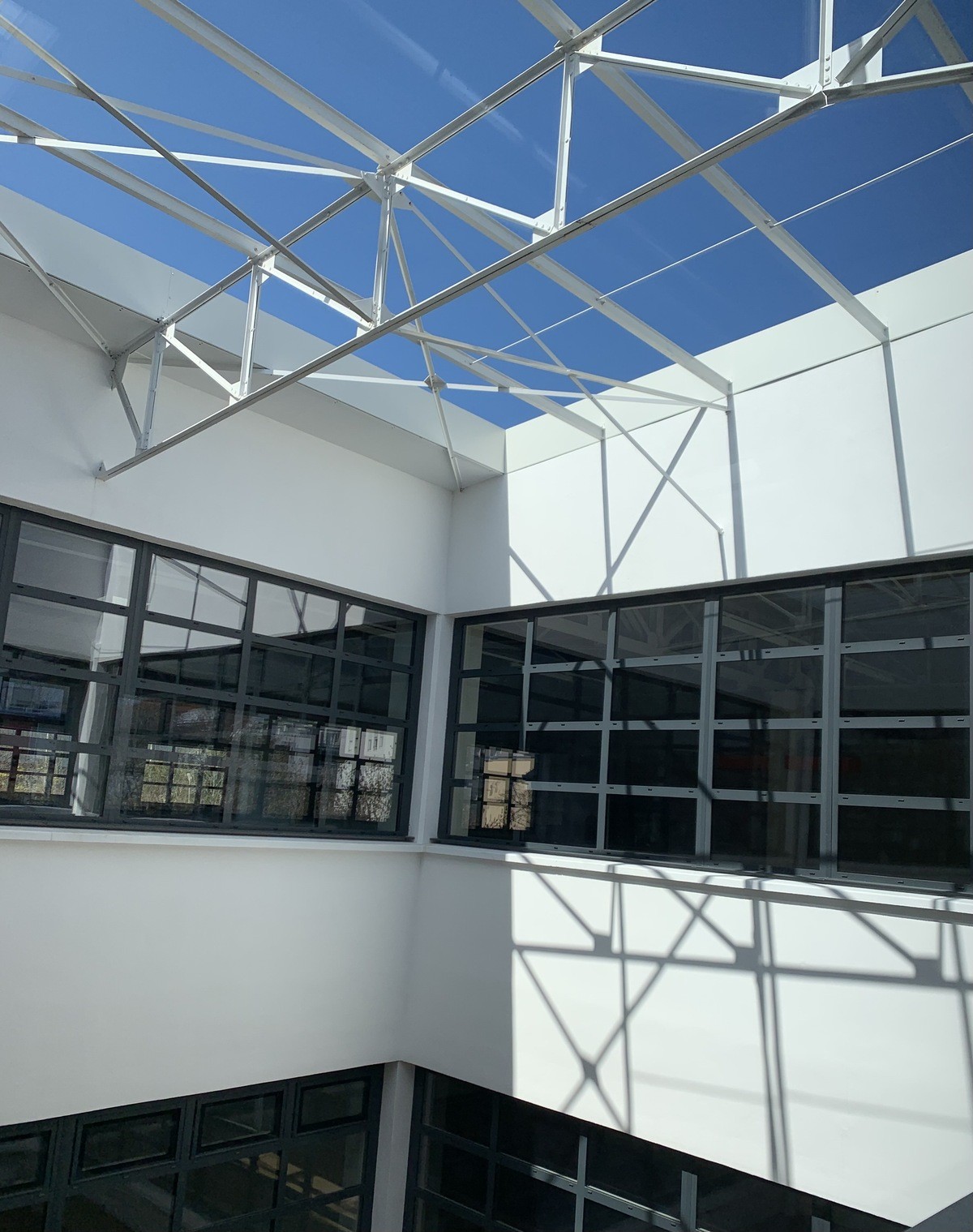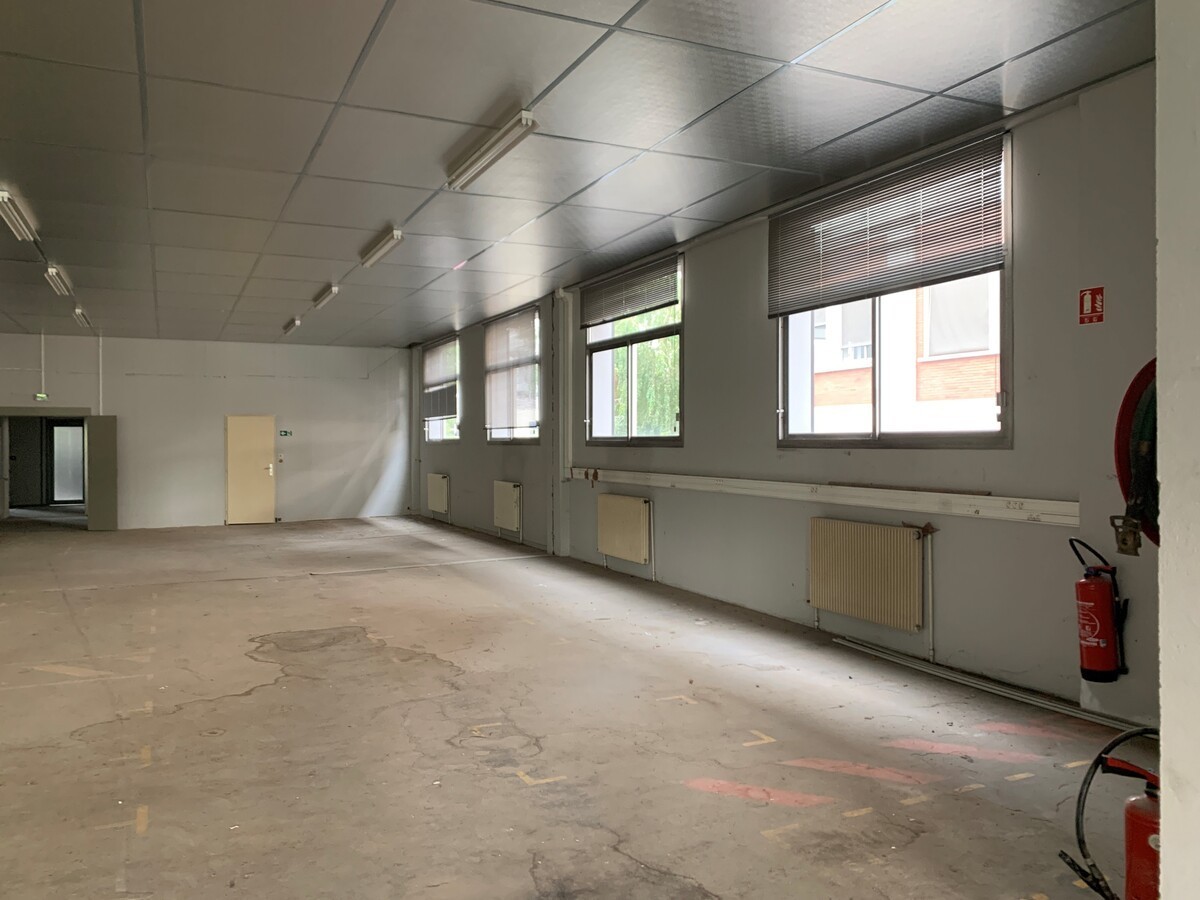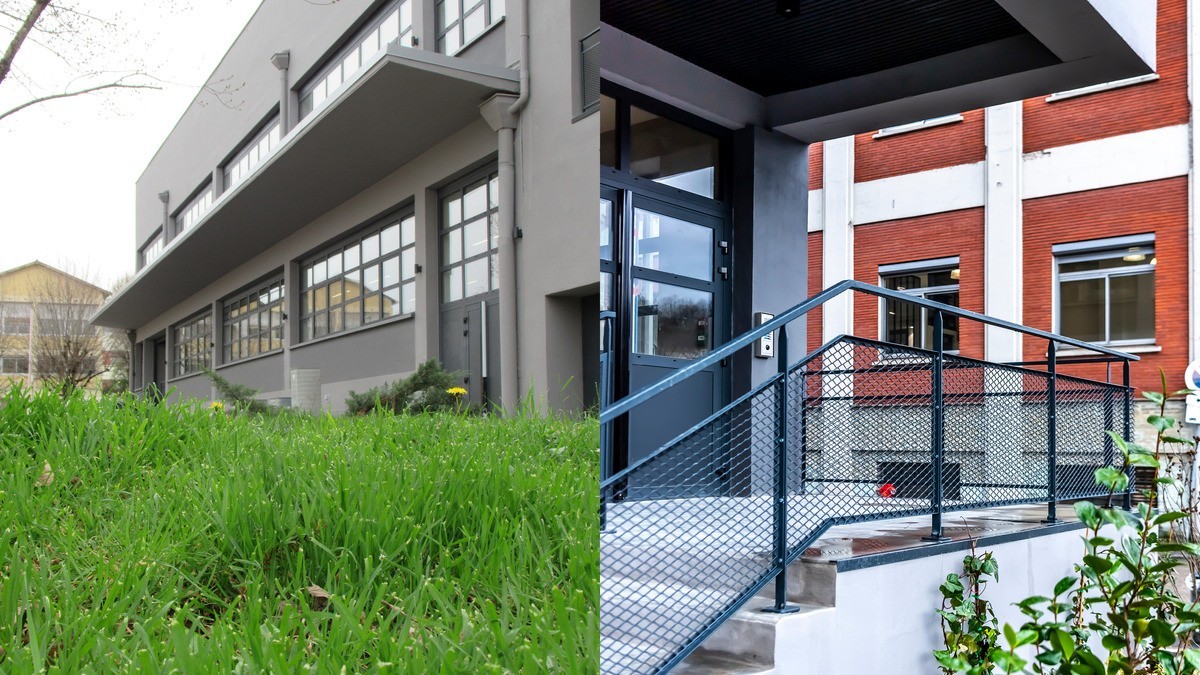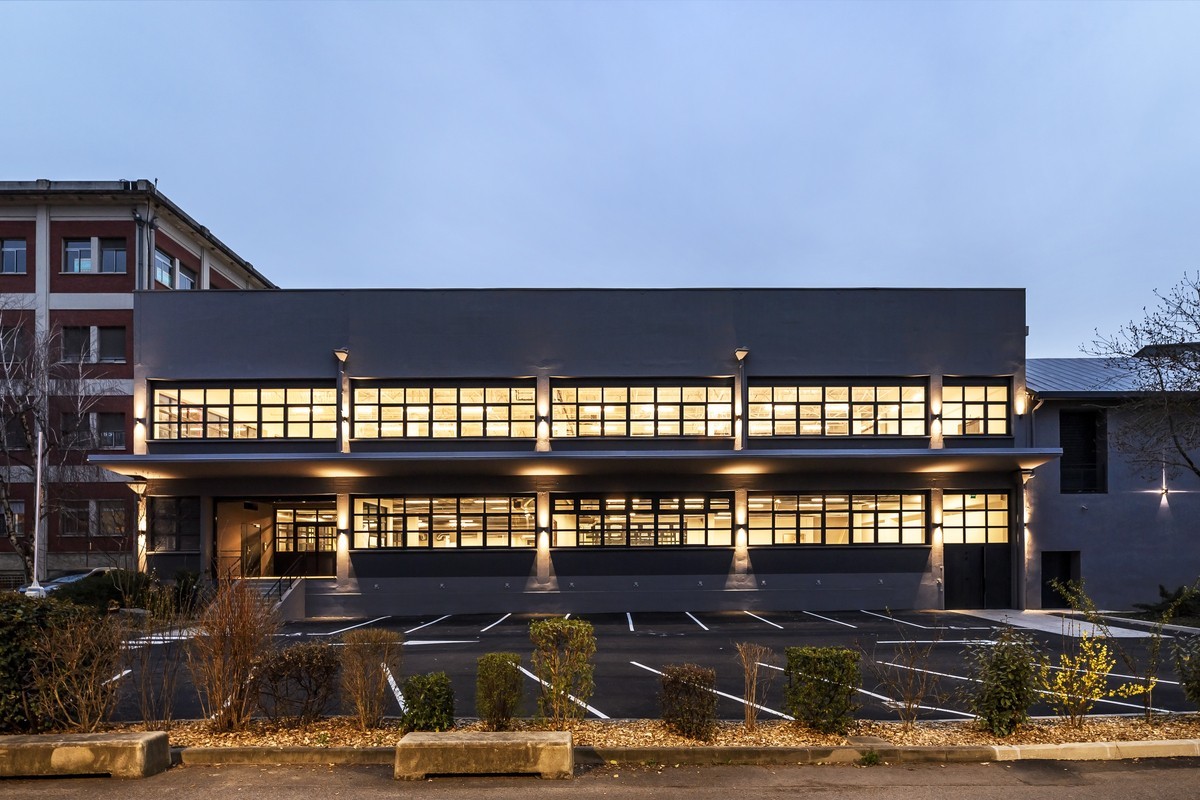Green Factory building
Last modified by the author on 25/03/2021 - 12:41
Renovation
- Building Type : Other building
- Construction Year : 1950
- Delivery year : 2021
- Address 1 - street : 24 rue Joannes Masset 69009 LYON, France
- Climate zone : [Cbc] Mild, dry winter, warm and wet summer.
- Net Floor Area : 2 870 m2
- Construction/refurbishment cost : 3 000 000 €
- Number of none : 300 none
- Cost/m2 : 1045.3 €/m2
-
Primary energy need
62 kWhep/m2.an
(Calculation method : RT existant )
This building was awarded the Sustainable renovation Grand Prize of the Green Solutions Awards 2020-21 at the international level; and a mention for the same category at the national level.
Located in the former industrial suburb of Lyon, which has been undergoing major changes since the 1990s, Green Factory is a mid-twentieth century building combining a steel frame and concrete structure (posts & beams & ribbed slab). The building was poorly insulated, very energy consuming and not cooled. It was connected to a collective gas boiler room for part of the premises, with additional electric convectors in the offices. It had been disused for several years because it no longer met the comfort and energy criteria that are the norm today. Its roof was made of asbestos cement and rested on a metal frame hidden by a false ceiling. The premises were poorly lit and unattractive and not accessible. The height under the roof varies from 5 to 6.50 m on the first floor and 3.50 m on the ground floor. The building has a floor area of approximately 3,000 m2 on two levels.
This rehabilitation is part of a global sustainable building approach that meets the challenges of the coming decades. Social and health issues, the impact on the local economy and the environment, and CO2 emissions are considered with equal value, considering that the construction world should be anchored in a more systemic approach.
The cultural dimension is present in the project. It is reflected in an architecture that preserves and enhances the industrial past of the Vaise district. This district of Lyon has undergone massive restructuring over the last few decades. Its industrial heritage has been erased in favour of new buildings that meet contemporary standards. Preserving the history of the area was one of the challenges of this project. The history of the district will be retraced in the common areas of the building.
Some figures after rehabilitation:
- Ceiling heights of 5 to 6.5 m on the first floor and more than 3.2 m on the ground floor, a heated and cooled volume of more than 12,000 m3, in line with the desire to leave the old framework visible.
- An energy saving of more than 60% compared to the initial situation (heating only) including heating and cooling. For the regulatory uses, the estimated consumption is 62 kWhEP/m².an, i.e. -29% compared to the requirements of the BBC renovation label, i.e. less than 9€ +- / m2 .an with a Kwh at 15 c excluding subscription, with an average ceiling height of more than 4 m Heating alone represents 13.50 kWhEP/m².an.
- The heating and cooling of this large volume is provided by a thermodynamic double flow ventilation (CTA). This AHU is coupled to a heat pump, and the air is diffused by perforated ducts. The perforated ducts with MIX-IND® technology, also called PULSEURS®, do not "throw" the supply air into the zone to be treated, like all diffusers, but create on their axis a "pressure field" capable of putting in controlled movement the whole mass of ambient air. Online monitoring of consumption is available to users.
- CO² emissions are reduced by a factor of 20: 2 kgCO2/m².year in the operating phase.
- Air permeability (Q4pa-surf in m3/(h.m²) is 1.14 (reference value is 1.7 for this type of building).
- An air quality approach with the installation of sensors with an e-mail alert system (fine particles, noise, hygrometry, temperature, CO2). Educational support is offered to users for the interpretation of measurements and to propose corrective actions. The double flow ventilation unit is equipped with a filtration of the incoming air and a plate exchanger to avoid recycling the indoor air (reduction of virus diffusion).
- x 2 of the initial glazed surface, i.e. 14% of glazed surface in relation to the thermal floor area (shon RT), including the creation of a central glazed patio for access to natural light and user enjoyment.
- 160 m3 of hemp and flax insulation and 90% French-made products and equipment
- Recycled materials (acoustic panels, terrace floor and social areas)
- More than 1500 m2 of restored and preserved steelwork
- More than 20 local companies and design offices
- 1 NF tertiary building label associated with the HQE peqa approach (7 associated qualities) + BBC renovation in the process of being awarded, as of 20 March objectives achieved and exceeded.
- Nearly 3,000 m2 of flexible surface area that can be adapted without major transformation
- 1 quality of use and educational approach: comfortable and bright social spaces (two comfortable terraces), electric vehicle charging points. Online access to energy consumption and air quality. A building accessible to all thanks to two facilities (PRM platform and lift).
Sustainable development approach of the project owner
The Lyon developer Marc Pigeroulet d'Arioste has been involved for a few years in a sustainable building approach. In 2016, during the renovation of its headquarters in Lyon, it had its offices certified with the obtaining of an NF Bâtiment durable & BBC Rénovation label. It continued on this path by offering its customers renovated office buildings or upgrades to buildings with high environmental added value. These latest achievements are in line with the ambition of the 2019 tertiary decree resulting from the Elan law and the 2050 objectives in terms of energy performance. For Green Factory, he shared and encouraged the commitment of the project management team to make this project an exemplary and reproducible achievement. Marc Pigeroulet is very attached to the architectural enhancement of old real estate heritage. This very laudable desire requires a fine and creative architectural approach to be compatible with the technical constraints linked to energy issues. Sustainable rehabilitation is the challenge for the coming decades. It must also be undertaken with respect for the historical, industrial and residential heritage.
Architectural description
This rehabilitation is anchored in a global sustainable building approach considering social, economic and environmental issues with the same value. The architectural project evokes the industrial past of this district located in the North West of the center of Lyon. In addition to the cultural and environmental aspects, the human aspect of which the well-being of the users is one of the driving forces of the project. The architectural and technical solutions retained offer a reasonable cost and are reproducible for this type of building. The bioclimatic dimension is developed in the other sections.
If you had to do it again?
This project lacks the renewable energy contribution of a photovoltaic power plant (in self-consumption) but the overload induced by this type of equipment was not compatible with the existing framework. The green spaces have been enhanced but it would have been possible to bring more permeability to the site by depositing the asphalt mixes in the parking lots and substituting them with permeable soil (gravel on or bee).
Photo credit
Semaphore Lyon and Marc Campesi
Contractor
Construction Manager
Stakeholders
Assistance to the Contracting Authority
MARC CAMPESI - DIAGONALE CONCEPT
M. CAMPESI Marc
https://www.diagonaleconcept.com/Client assistance
Thermal consultancy agency
SEQUOIA
M. DEHAN Bruno
In charge of certification monitoring
Thermal consultancy agency
EMCON
M. DUPRE David
thermal and STD studies
Designer
CECILE REMOND architecte du patrimoine
Mme REMOND Cécile
https://app.bam.archi/architecte/agence-cecile-remondPrior declaration for modification of facades & roofs in collaboration with Ressources Green Building rgb
Company
INDUSTHERM
M. BULLY Géraud
Heating-Cooling-Ventilation
Company
JLC MENUISERIE
M. ALEX Laurent
Interior-exterior carpentry
Company
DDSG
M. DA SILVA GOMES Denis
Plastering; painting ; false ceilings
Company
CJL ELECTRICITE
M. THENAULT David
Electricity-strong currents
Company
AS PLOMBERIE
M. GERVAIS Sébastien
Sanitary Plumbing
Company
PIMENTA JOAO
M. PIMENTA Joao
Masonry
Contracting method
General Contractor
Type of market
Realization
Energy consumption
- 62,00 kWhep/m2.an
- 127,00 kWhep/m2.an
- 167,00 kWhep/m2.an
Real final energy consumption
24,00 kWhef/m2.an
Envelope performance
- 0,34 W.m-2.K-1
- 1,14
More information
Equipment start-up on March 10. Observation set at 19 °, interior temperature above 21 ° without internal contributions from PCs and users. First return of monitoring July 2021 (heat wave period)
Systems
- Individual electric boiler
- Double flow heat exchanger
- Heat pump
- 50,00 %
Smart Building
Urban environment
Product
Hemp and linen insulation
Biofib
Construction and exploitation costs
- 350 000,00 €
- 90 000 €
- 3 000 000 €
Indoor Air quality
Comfort
GHG emissions
- 2,00 KgCO2/m2/an
- 20,00 KgCO2 /m2
- 50,00 année(s)
Life Cycle Analysis
Reasons for participating in the competition(s)
"Faire de cette friche industrielle énergivore et inconfortable, un lieu de vie et de travail agréable en toute saison. Répondre de manière efficiente aux enjeux environnementaux des prochaines décennies en proposant une réhabilitation performante, frugale et respectueuse du passé industriel du bâtiment et de son environnement. Réhabiliter, conserver, valoriser : Ce sont les points forts du projet "
Les points forts de cette rénovation éco-engagée:
- Le caractère industriel du bâtiment est préservé et valorisé en relation avec l’histoire du quartier sans altérer la performance environnementale. L'ancienne charpente métallique a été restaurée et mise en valeur et elle s'inscrit aujourd'hui dans un grand volume chauffé (hauteur maxi 6,5m) et rafraîchi avec des consommations énergétiques réduites. Les baies créés et remplacées sont performantes, elle ont fait l'objet d'une étude par une architecte du patrimoine partenaire du projet pour préserver la qualité architecturale globale du bâti.
- Le projet s'inscrit dans une démarche éco-responsable avec à la clefs un Label NF Batiment Tertiaire associé à la démarcheHQE Peqa (qualités associées: BBC rénovation 62 kWhEP/m².an + Confort d'été + qualité de l'air intérieur + ambiance visuelle + acoustique, + qualité de construction et facilité de maintenance) en cours de validation. Tous les objectifs du label sont atteints et dépassés.
- Une ventilation double flux thermodynamique assure le chauffage et la ventilation avec un procédé de diffusion très performant : des gaines perforées avec technologie MIX-IND®, également appelées PULSEURS®. Elles ne “lancent” pas l’air de soufflage dans la zone à traiter, comme tous diffuseurs, mais créent sur leur axe un “champ de pression” capable de mettre en mouvement contrôlé et doux la totalité de la masse d’air ambiant. Ce procédé est très adapté aux grands volumes.
- Les matériaux biosourcés (160 m3 pour l'isolation des murs en 14 cm de chanvre&lin, plancher bois) ont été privilégiés.
- Economie circulaire: les planchers terrasse et les isolants acoustiques sont issus du recyclage.
- Empreinte carbone : au delà de diviser par 20 les émissions de C0² (cf.études), des produits fabriqués en France ont été privilégiés comme les menuiseries extérieurs, les isolants, la CVC, la peinture ... 100% des entreprises et bureaux d'études, architectes sont des TPE locales. Toutes se sont engagées dans un contrat écologique pour que la qualité soit au rendez-vous. 90% des entreprises présentent ont déjà participé à nos formations de sensibilisation sur chantier (analyse de cycle de vie et qualité de l'air intérieur).
- Une démarche qualité de l'air a été instaurée au delà des exigences du label. Outre l'étiquetage sanitaire A ou A+ exigé pour tous les produits, le groupe de CTA double flux est équipé de filtres mais également d'un échangeur à plaque sans recyclage de l'air extrait et l'air entrant réduisant la diffusion des virus ou bactéries. Les gaines de distribution d'air chaud et froid micro-perforées sont métalliques (rigides) pour faciliter leur nettoyage (voir photos).
- Le bâtiment est monitoré avec déclenchement d'alertes en cas de franchissement de seuils de référence (qualité de l'air, températures ou consommation d'énergie). Un abonnement de suivi de performance et recommandations pour des actions correctives est proposé aux futurs usagers du site. Les principales mesures QAI : particules fines, CO², température, lumière, bruit. Mesures énergie (réglementaires et tous usages).
- Mobilité et accessibilité: 20 prises de chargement de véhicules électriques sont mis à disposition des usagers du site. Des emplacements vélos et motos sont installés. Le bâtiment est rendu accessible à tous avec un monte-personne PMR pour accéder au RDC qui est surélevé. Un ascenseur permet d'accéder au 1er étage.
- Flexibilité des usages : le bâtiment et les équipements sont conçus pour s'adapter à des changements d'usage ou à une découpe en 2 ou 4 lots sans modifications majeures pour réduire l'impact carbone de modifications d'aménagement assez courantes sur ces grands plateaux. Quelques exemples : des tresses courants forts connectables en tout point sous plancher technique, des rails de luminaires sur lesquelles on peut clipser simplement tout type de sources (spots, bandeaux led etc..) et créer des antennes à 90 °, un réseau de CVC conçu pour être divisible avec 4 locaux techniques.
- Biodiversité et espaces sociaux : Chaque espace végétalisé dans les espaces extérieurs a fait l’objet de nouvelle plantation avec une plus grande diversité d’essences.
- Des espaces sociaux lumineux et agréables au RDC sont éclairés par un puit de lumière de 50 m2 créé dans le toit et la dalle du R+1. Au R+1, un espace couvert et ouvert sur un espace vert a été aménagé pour les pauses et réunions informelles.
Quelques chiffres
Hauteur sous plafond de 5 à 6,5 m à l'étage et plus de 3,2m au rdc et un volume d'environ 12 000m3.
Gain énergétique 60% par rapport à la situation initiale (chauffage seul ) avec chauffage et rafraichissement soit 62 kWhEP/m².an soit -29% par rapport aux exigences du label BBC rénovation dont moins de 13 kWhEP/m².an pour le chauffage seul . Conforme au décret tertiaire et objectif 2050.
120 ml de gaines rigides de pulsion de l'air à haute performance, flux doux et silencieux, technologie MIX-IND®.
Division par 20 des émissions de CO² de ( 20 à 2 kgCO2/m².an) selon DPE.
Perméabilité à l’air (Q4pa-surf en m3/(h.m²) est de 1.14.
14% de surface vitrée par rapport à la surface de plancher thermique (shon RT).
160 m3 d'isolants chanvre.
1500 m2 de charpente métallique conservée et restaurée.
0 m3 d'air recyclé avec un échangeur à plaque sur la ventilation double flux thermodynamique.
6 mesures de qualité de l'air et confort (particules fines Pm2,5 et Pm1, CO², hygrométrie, température, niveau de bruit ) par des capteurs à chaque niveau. Des alertes automatisées.
2 capteurs de mesure de consommation d'énergie en continue (tous usages et réglementaires) avec affichage en direct et en ligne. Une veille avec des alertes automatique en cas d'écart important aux prévisions.
Plus de 20 entreprises et bureaux d'études locaux.




